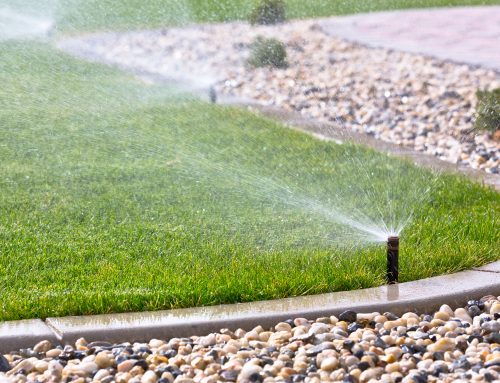Every year before the first freeze comes, ‘winterizing’ or ‘blowing out’ your sprinkler system should be the number one priority. In states such as Connecticut where the frost levels can extend below the depth of the installed piping, not taking proper maintenance steps can make your entire irrigation system highly susceptible to weather damage.
If there is any water left in your sprinkler pipes, it can freeze, expand, and crack your PVC piping. Though sprinkler pipes are often flexible and will generally expand under pressure, any remaining water could potentially freeze and rupture these pipes. In addition to the PVC pipes, water left in the back flow assembly can damage the internal components as well and potentially crack the brass body.
During long stretches of sub-freezing weather, frost can move deeper into the soil. How deep the frost travels generally depends on how cold it is and for how long it stays that cold. Of course, after the temperature begins to rise, the soil will gradually begin to thaw. So, how deep can the frost go? Unfortunately, there’s no standard answer. While most sprinkler systems are buried between 8-12 inches below the surface, it’s difficult to estimate how deep the frost will extend each winter. There are a number of variables that can affect this. The obvious one is the longer the cold is constant, the deeper the frost will go. Other weather factors, however, can have an impact, such as when wind constantly blows on one spot. This can cause frost to go deeper in that area.
To minimize the risk of damaging your irrigation system, you will need to winterize your sprinklers. There are a few different methods used, but the most common and effective one is the ‘blowout’ method. As the name implies, this essentially involves ‘blowing out’ any remaining water from your system.
Below are the major steps in this process:
- Using the right equipment. Specifically, a large compressor with an accurate pressure valve. If renting, be sure to test a few before using on your system.
- Remove the backflow preventer or anti-siphon valve. Connect the air compressor to the backflow preventer riser on the downstream side of the system.
- Turn on the valves one by one, using the automatic controller. Begin with the last valve, or the one at the highest elevation.
- Turn on the air compressor. Warning: wear protective eyewear. Too much air pressure or too high air temperature can have serious consequences.
- Blow the water out. As soon as the water has been effectively blown out, turn off the air compressor. Don’t allow air to blow out any longer than necessary.
- Move on to the next valve. Repeat the same sprinkler system blow out as outlined above on each of valve circuits and anti-siphon valves.
- Repeat entire process. Warning: do not turn off all the valves when the compressor is running as it could blow up your lawn sprinkler system.
Winterizing your sprinkler system can be confusing and difficult. If you need to bring in a professional, GreenLawn is ready to help. Our team can expertly prepare your sprinkler system for the cold New England winter ahead.


